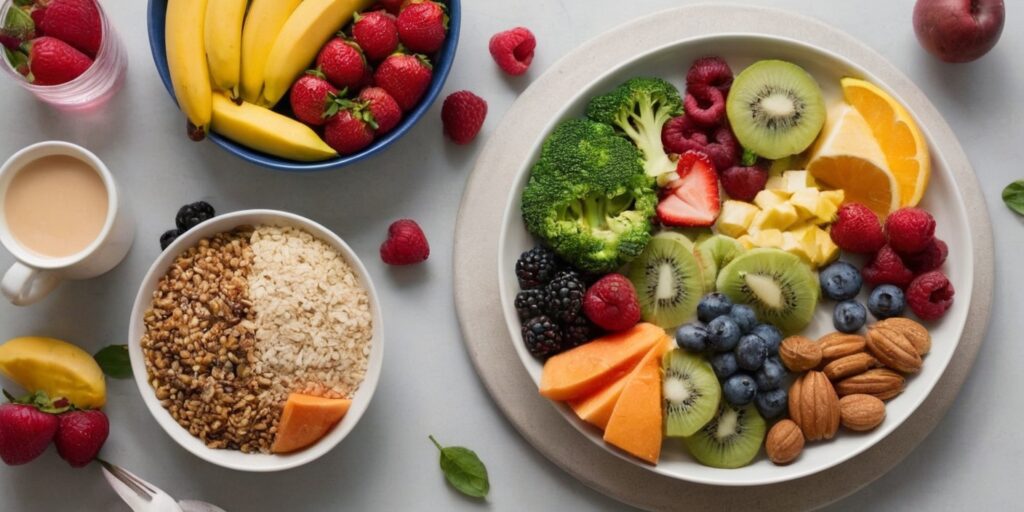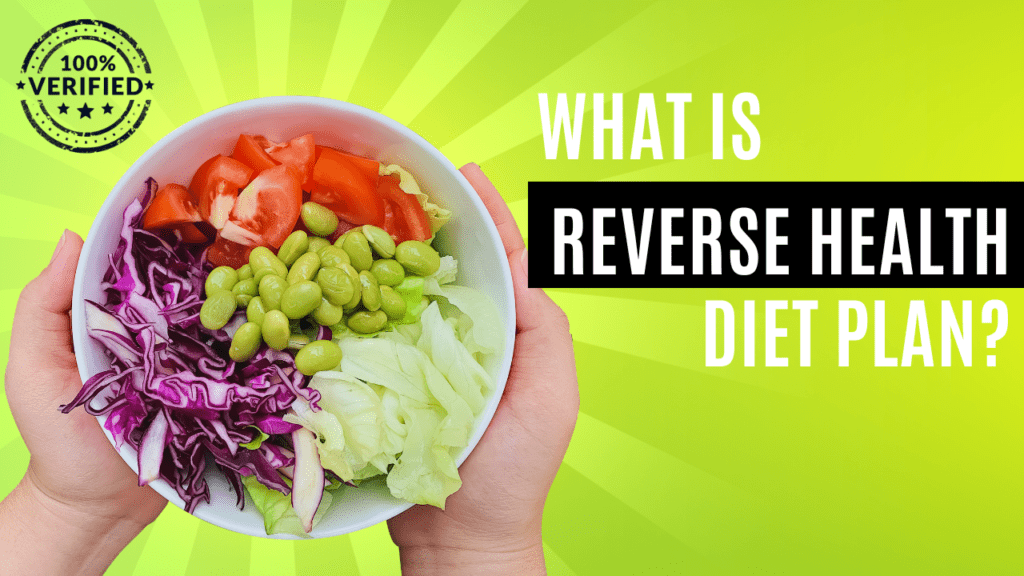If you’re looking to take control of your diet as a diabetic patient, our 7-day healthy meal plan offers a strategic approach to managing your blood sugar levels.
This well-structured meal plan can help maintain stable blood glucose levels, support overall health, and prevent complications associated with diabetes.
Our meal plan will outline a comprehensive 7-day diet plan tailored specifically for diabetic patients, featuring balanced meals and snacks to promote optimal health and well-being.
Ready to discover how this meal plan can transform your approach to diabetes management?
Day 1: Meal Plan
For a diabetic patient, Day 1 of the healthy diet plan focuses on balancing nutrients to help manage blood sugar levels effectively.
Begin your day with a balanced breakfast containing whole grains, lean protein like eggs or Greek yogurt, and some healthy fats such as avocado or nuts.
For snacks, opt for fresh fruits, vegetables with hummus, or a small handful of almonds.
Lunch should include a mix of vegetables, lean protein like grilled chicken or tofu, and complex carbohydrates such as quinoa or sweet potatoes.
Dinner can consist of fish, a side of quinoa, and a generous portion of leafy greens.
Remember to drink plenty of water throughout the day to stay hydrated and aid digestion.
Day 2: Meal Plan
Begin your second day of the healthy diet plan for diabetics by including a variety of nutrient-dense foods to support stable blood sugar levels and overall well-being.
Start your day with a balanced breakfast consisting of steel-cut oats topped with fresh berries and a sprinkle of cinnamon.
For lunch, enjoy a colorful salad filled with leafy greens, grilled chicken, cherry tomatoes, and a vinaigrette dressing.
As an afternoon snack, opt for a small handful of almonds paired with a piece of fruit.
Dinner can include baked salmon with roasted vegetables and quinoa.
Remember to stay hydrated throughout the day by drinking plenty of water or herbal teas.
Day 3: Meal Plan
On Day 3 of your healthy diet plan for diabetes management, you’ll find various menu options tailored to keep your blood sugar levels stable.
It’s important to focus on portion control to guarantee you aren’t consuming excessive amounts of carbohydrates or sugars.
These tips will help you navigate your meals effectively and maintain a balanced diet.
Day 3 Menu Options
Explore a variety of nutritious meal options for Day 3 of the diabetic patient’s healthy diet plan.
For a balanced day, consider the following meal ideas:
| Breakfast | Lunch | Dinner |
|---|---|---|
| Scrambled eggs with vegetables and whole grain toast | Grilled chicken salad with mixed greens and vinaigrette | Baked salmon with quinoa and roasted vegetables |
| Greek yogurt with berries and a sprinkle of nuts | Turkey and avocado wrap with whole wheat tortilla | Lentil soup with a side of steamed broccoli |
| Chia seed pudding with a side of sliced almonds | Veggie stir-fry with tofu and brown rice | Grilled shrimp skewers with a side of asparagus |
These meal options provide a mix of protein, fiber, and healthy fats to support stable blood sugar levels throughout the day.
Portion Control Tips
When managing your diabetic diet on Day 3, paying attention to portion control is crucial to maintaining stable blood sugar levels and overall health.
To control portions effectively, use smaller plates to visually trick your mind into feeling satisfied with less food.
Additionally, measure your portions using tools like measuring cups or a food scale to ensure precision.
Eat slowly and savor each bite to give your brain time to register fullness, preventing overeating.
Be mindful of serving sizes listed on packaging and consider pre-portioning snacks into individual containers to avoid mindless eating.
Day 4: Meal Plan
Consider incorporating a variety of nutrient-rich foods into your diabetic meal plan for Day 4 to promote peak health and blood sugar management.
Here’s a suggested meal plan for Day 4:
- Breakfast:
- Start your day with a bowl of oatmeal topped with fresh berries and a sprinkle of nuts for added fiber and healthy fats.
- Lunch:
- Enjoy a colorful salad with mixed greens, grilled chicken, cherry tomatoes, cucumbers, and a vinaigrette dressing on the side.
- Dinner:
- For dinner, try baked salmon with roasted asparagus and quinoa on the side for a balanced meal rich in omega-3 fatty acids and protein.
Day 5: Meal Plan
Looking for nutritious meal ideas to balance your blood sugar levels on Day 5 of your healthy diabetic meal plan?
Here is a suggested meal plan that focuses on providing you with essential nutrients while keeping your blood sugar in check:
| Meal | Foods |
|---|---|
| Breakfast | Scrambled eggs with spinach and whole grain toast |
| Snack | Greek yogurt with sliced almonds |
| Lunch | Grilled chicken salad with vinaigrette dressing |
| Snack | Carrot sticks with hummus dip |
| Dinner | Baked salmon with quinoa and steamed broccoli |
This meal plan incorporates a balance of protein, healthy fats, fiber, and complex carbohydrates to help manage your blood sugar levels effectively throughout the day.
Day 6: Meal Plan
Let’s explore the meal options planned for Day 6 to keep your blood sugar levels in check.
Start your day with nutritious breakfast choices that will provide you with sustained energy.
Consider flavorful and balanced suggestions for dinner to end your day on a healthy note.
Day 6 Breakfast Options
For a nutritious start to Day 6 of your diabetic meal plan, consider preparing a breakfast that combines protein, fiber, and healthy fats to help stabilize your blood sugar levels throughout the morning.
Here are some healthy breakfast options:
- Greek Yogurt Parfait: Layer low-fat Greek yogurt with fresh berries and a sprinkle of nuts or seeds for a protein-packed and satisfying meal.
- Avocado Toast: Top whole-grain toast with mashed avocado, a poached egg, and a sprinkle of chili flakes for a good mix of healthy fats and protein.
- Chia Seed Pudding: Mix chia seeds with unsweetened almond milk, a touch of vanilla extract, and a sugar-free sweetener. Allow it to set overnight for a fiber-rich and filling breakfast option.
Day 6 Dinner Suggestions
To continue maintaining balanced blood sugar levels throughout the day, consider incorporating nutritious and flavorful dinner options into your Day 6 meal plan.
For dinner on Day 6, aim for a balanced plate that includes lean protein, non-starchy vegetables, and whole grains.
A delicious option could be grilled salmon with a side of roasted asparagus and quinoa.
The omega-3 fatty acids in salmon can help reduce inflammation and improve heart health, while asparagus is packed with fiber and essential nutrients.
Quinoa is a whole grain that provides protein and fiber, making it a great alternative to refined grains.
Remember to monitor portion sizes and choose cooking methods like grilling or baking instead of frying for a healthier meal.
Day 7: Meal Plan
Consider incorporating a variety of nutrient-dense foods into your daily meal plan to manage your blood sugar levels effectively as a diabetic patient.
For Day 7, focus on maintaining a balanced diet that includes the following:
- Breakfast: Start your day with a bowl of Greek yogurt topped with fresh berries and a sprinkle of chia seeds. Pair this with a slice of whole grain toast spread with avocado for a satisfying and nutritious meal that will keep you full and energized.
- Lunch: Enjoy a colorful salad with mixed greens, cherry tomatoes, cucumber slices, grilled chicken breast, and a vinaigrette dressing made with olive oil and balsamic vinegar. Add a small whole fruit, like an apple, as a sweet ending to your meal.
- Dinner: Prepare a delicious meal of baked salmon seasoned with lemon and herbs, served with a side of quinoa mixed with roasted vegetables like bell peppers, zucchini, and onions. This dinner is rich in protein, healthy fats, and fiber, providing you with essential nutrients for peak health.
Conclusion
Following a seven-day healthy diet plan for diabetic patients can help them effectively manage their blood sugar levels and promote overall well-being.
You can support stable blood sugar management and maintain a healthy lifestyle by incorporating nutrient-dense foods, lean proteins, healthy fats, and fiber-rich carbohydrates into your meals.
Remember to practice portion control, stay hydrated, and consult a healthcare professional for personalized dietary recommendations tailored to your needs.

